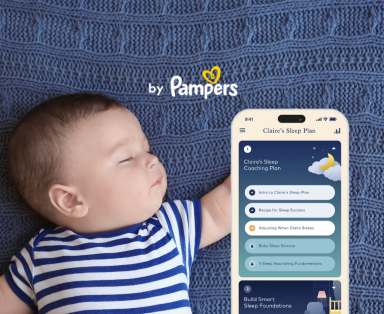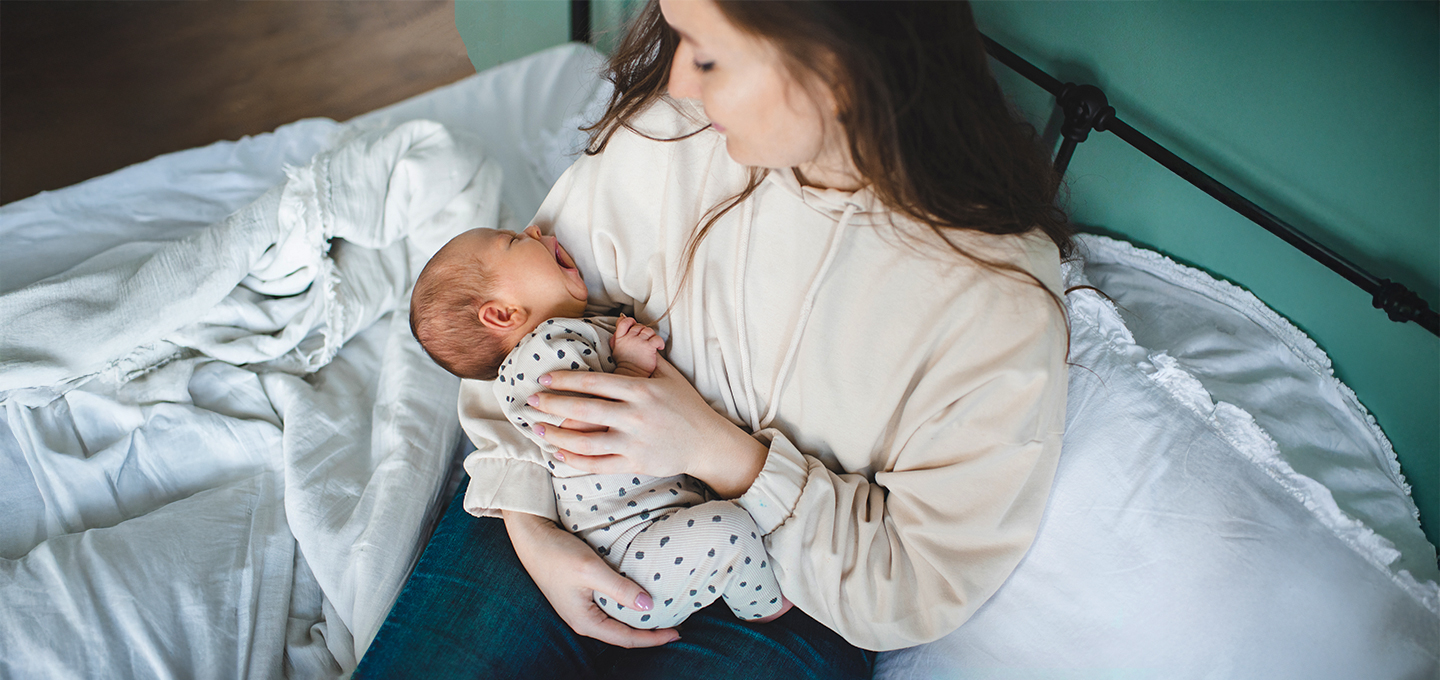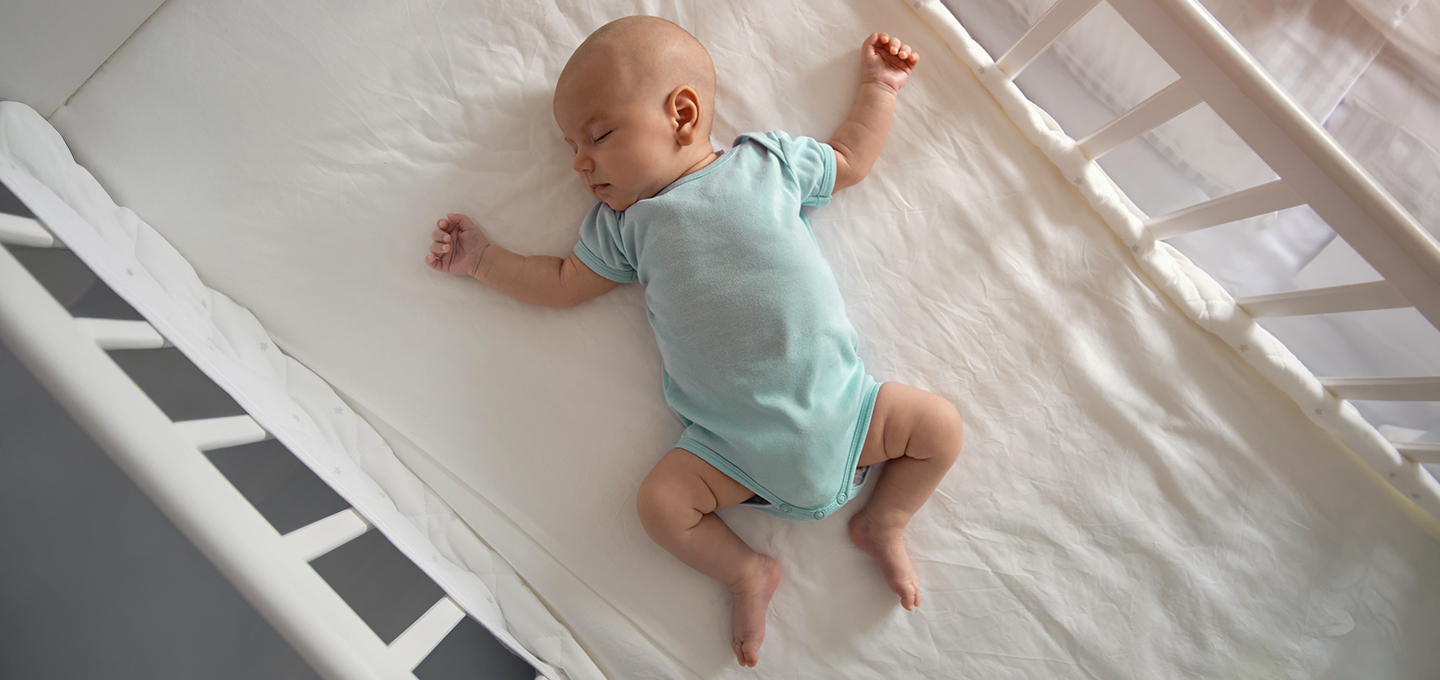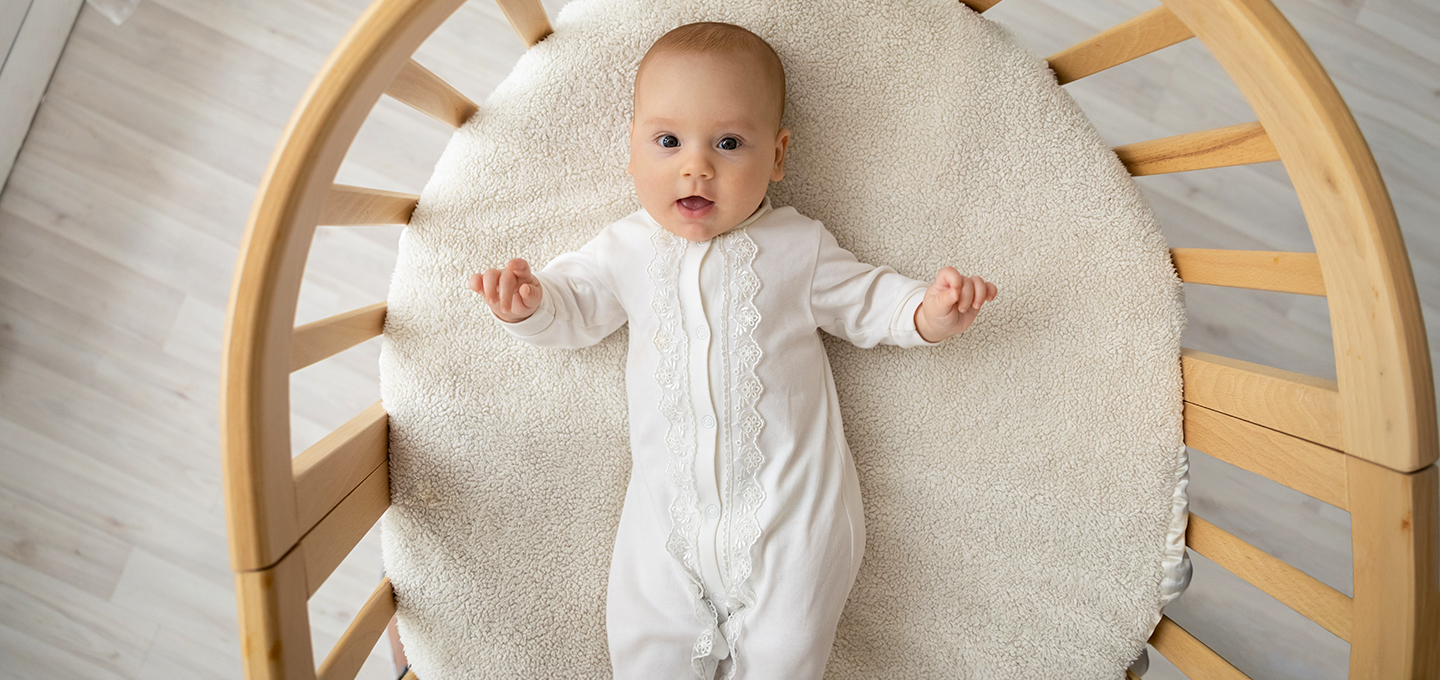
All About the Cry-It-Out Method for Sleep Training


IN THIS ARTICLE
Quick Answers: The Cry-It-Out (CIO) Sleep Training Method
• What is the Cry-It-Out (CIO) method? The CIO method (also known as the extinction method) is a sleep training approach where babies are left to cry for a period to learn self-soothing and fall asleep independently, after their basic needs (feeding, clean diaper) are met.
• When can you start CIO? Pediatricians typically advise starting CIO no earlier than 4-6 months (specifically 16 weeks old and 14 pounds), when a baby's circadian rhythm is more developed and they can self-soothe. It's not suitable for newborns.
• How long should you let a baby cry it out? In the strict CIO method, there's no set time limit; the baby is left to cry until they fall asleep. Initial crying can be long, but often reduces significantly within 3-4 nights, with consistency being key.
• Is the Cry-It-Out method harmful? The article states that letting a baby cry for short periods is generally not harmful if they are well. However, it acknowledges that it can be emotionally challenging for parents and recommends trusting instincts if doubts arise.
•What are alternatives to CIO? Other sleep training methods range from moderate parental involvement (e.g., Ferber method with timed checks) to high parental involvement (e.g., Pick-Up/Put-Down, Bedtime Routine Fading), offering gentler options
Struggling with sleepless nights? The cry-it-out method (CIO)—also known as the extinction method—is one of the many sleep training approaches you may have heard of. It aims to help babies learn to fall asleep independently. It may not be the right fit for every baby and family, and experts have mixed opinions on whether or when to use it. With that in mind, it’s important to remember that there are many sleep-training methods to consider, and crying it out is just one.
Here are some key takeaways:
This sleep training method involves helping your little one learn to self-soothe by letting them cry for a short period of time before tending to them in their crib (so long as they're safe).
Typically between 4–6 months, when babies have developed their circadian rhythm and are more able to learn self-soothing.
Gentler options like the Ferber method (graduated check-ins) or “camping out” may still promote self-soothing with less distress.
It’s not harmful to let your baby cry for short periods if they’re well. However, this method isn’t for everyone, so if you have doubts, try a more hands-on approach.
Understanding your baby’s cues, maintaining a consistent bedtime routine, and choosing a method that fits your family’s values are key to success. In this article, Mandy Treeby, our resident Pediatric Sleep Consultant for the Smart Sleep Coach by Pampers™ app, has detailed what the cry-it-out technique is and how it works, so you can stay properly informed as you choose the right method of sleep training that fits best for your family.
What Is the Cry-It-Out (CIO) Sleep Training Method for Babies?
The cry-it-out (CIO) sleep training method, also known as the extinction method, is just as it sounds: once your baby’s needs have been met (feeding, clean diaper, etc.), you leave your baby to cry it out and settle themselves to sleep. Falling asleep independently is a learned skill; babies need to learn how to fall asleep, just like they learn other skills, such as rolling over, crawling, and walking.
Much like tummy time, learning to fall asleep can be frustrating; it takes time, and your little one needs a safe space and enough time to practice. As a parent, it might help to remember this tidbit: no matter which sleep training approach you choose, stay patient through the process, and know it will inevitably take time for your baby to master the skill.
CIO is a non-parental involvement method, so essentially, you don't enter the room again, once you've put your baby down (of course, knowing you’ve met all their needs), until the next feeding time or when it’s time for your baby to get up in the morning. Depending on how your baby is used to falling asleep (being rocked to sleep, fed to sleep, using a pacifier, etc.), you can expect this change in approach will be met with some protesting.
Leaving your baby to cry is challenging and emotionally difficult, which is often why many families do not choose the cry-it-out method when it comes to sleep training.
Tip
Habit change takes time, no matter which sleep training approach you choose. It requires 100% consistency for 2-3 weeks to start to see results. It’s always better to start with a higher parental involvement approach (like pick up, put down) and then transition to lower involvement approaches (like Ferber or even cry-it-out) if you find that your baby is not responding well to other methods.
CIO, Ferber, Pick-Up/Put-Down Methods: What’s the Difference?
We can classify sleep-training methods on a sliding scale from no-parental involvement (like CIO) to high parental involvement. This table gives you an idea of how to compare some of the different methods, for example, Ferber vs. cry-it-out. Here we compare just three in a range of methods to help your child learn to fall asleep:
*Every baby is different, so it can be hard to put a time on each method. It also depends on how consistently you have applied the sleep-training method.
When Can You Start and Stop the Cry-It-Out Method?
What is the best age to start the cry-it-out method? Pediatricians advise waiting until your baby is at least 16 weeks old and weighs 14 pounds before starting sleep training, including the cry-it-out method. However, keep in mind that higher parental involvement approaches like “pick up put down” are often a better fit for families of younger babies in the 4-month age range.
Before about 4 months of age, your baby’s circadian rhythm is still maturing. They’re working on understanding the difference between day and night, and feeding still takes priority over sleep. As your little one works to adjust to life outside of the womb, their sleep is very disorganized, and sleep training is not only unnecessary, but it also won’t be effective.
So it goes without saying that you shouldn’t let a newborn cry it out. In fact, the best thing you can do when it comes to sleep is to get sleep fundamentals right.
Tip
Before starting sleep training, make sure you have the basics covered: follow age-appropriate wake windows, establish a consistent routine, maintain a bedtime routine, and create a restful sleep environment. These factors can greatly improve sleep on their own. If you still wish to pursue sleep training, consult your pediatrician first.
As a sleep consultant, I recommend starting sleep training no earlier than 16 weeks. While there's no strict timeline, many babies don't face sleep issues until later. Starting too soon can hinder your chances of success if your baby is struggling with sleep.
That said, you can start with healthy sleep fundamentals from day one, which include:
Is Your Baby Ready for Sleep Training with the CIO Method?
Remember that every baby and situation is different, so instead of asking if they’re ready to sleep train with the CIO method, consider if they’re ready for sleep training overall and make sure you have all of the fundamentals in place. A baby who is on the wrong schedule won’t fall asleep no matter which method you choose to use. With that in mind, you might have to adjust your timeline a bit according to your little one’s specific needs.
If sleep is a struggle, it could be time for a nap transition or a different balance of day and night sleep.
Signs that your baby may need help with sleep include:
Remember that sleep training is just one part of addressing your baby’s sleep needs. It helps to encourage your little one to learn to fall asleep on their own—but this will only work if sleeps are timed right and you have a consistent bedtime routine. Those sleep fundamentals really are the foundation of improving your baby’s sleep habits.
As you select the right approach to sleep training for your family, use your best judgment to decide what will work for you. But remember, consistency is everything when it comes to sleep, so once you choose a sleep training method, give it at least 2 weeks before deciding it isn’t a fit for your baby.
And as you prepare for sleep training, check out this video from Mandy, our Pediatric Sleep Coach, so you are set up for success:
How to Do the Cry-It-Out (CIO)/Extinction Method
Preparing for sleep training is almost as essential as consistently implementing the sleep-training method itself. Therefore, before you actually begin the CIO method, there are a few key steps you should take:
How to Implement the Cry-It-Out Method
Once you have all the above in place and you’ve decided when to start your baby’s cry-it-out sleep training schedule, then you can do so using the following steps:
Remember, by being consistent and patient, you’re giving the cry-it-out technique the best chance to be effective and your baby the best chance at learning how to become a strong, independent sleeper.
Tip
If you struggle to hear the protesting, try swapping with your partner and taking a walk to clear your head.
How Long Should You Let Your Baby Cry It Out?
As we mentioned earlier, the cry-it-out (CIO) method involves allowing your baby to cry until they fall asleep. Rest assured, they’ll eventually doze off. The duration of crying can vary significantly; some babies may protest for 25 minutes, while others might cry for 65 minutes or even longer. It’s important not to impose a time limit when using the CIO method, as that would be a different approach to sleep training. If you enter the room during the process, it effectively resets the method, and your baby may just need a few more minutes to calm down.
Should You Let Your Baby Cry It Out for Naps?
If you’ve decided to use the cry-it-out technique during nighttime sleep, you can also implement it for naps to maintain a consistent routine for your baby. Once nighttime cry-it-out has begun, try incorporating the same method for naptime after 2 to 3 weeks. At this point, your baby may have learned some self-soothing skills during their nighttime sleep training.
Naps are often trickier than nighttime sleep, and it’s normal for some babies to cry through a full nap without sleeping for the first few days. If there’s no improvement after about a week, you might consider adjusting your approach.
Keeping a consistent pre-nap routine, using sleep cues like white noise and a dark room, and starting with the first nap of the day can all support your baby's ability to self-soothe during naps.
If you are considering sleep training and don’t know where to begin, you can take the free sleep assessment and get a personalized sleep plan to start working on sleep fundamentals and address your baby’s sleep challenges.
Is It Bad to Let a Baby Cry It Out?
You're not the only one out there asking this exact question; many parents worry and wonder if the cry-it-out method is bad or harmful for their baby. It might give you peace of mind to know that it is OK to let your baby cry; it doesn't harm them. In fact, short periods of crying can be helpful for babies.
Crying is a natural form of communication for babies and can actually aid in processing an active day, settling down, and falling asleep.
That said, we understand that listening to your baby cry isn't easy, and if you have doubts about using this method, then trust your instincts and choose a more hands-on approach to solving sleep, like pick up put down or bedtime routine fading. Babies have many ways to soothe themselves when needed—not just tears, but also sucking on their hand or fingers, rocking their head, or rubbing the bedsheet.
Is There a Modified Version of the Cry-It-Out Method?
There’s no official, modified cry-it-out method, but there are a few alternative sleep-training techniques to consider. But keep in mind that many sleep-training techniques result in at least a few tears and that some methods are more suitable and effective for toddlers and older kids. Learn how to sleep train without crying it out with the following methods:
If you’re unsure about the CIO method, it’s better to start with one of these methods and switch to cry-it-out if the alternative is not working well for you and your little one.
Every baby and family is different, so it's best to give any sleep-training method at least two weeks of consistent delivery before switching. As always, be sure to consult your child's healthcare provider if you have additional questions or concerns.
FAQS AT A GLANCE
If you’re following the CIO or cry-it-out sleep-training method, the concept is to let your baby protest and cry until they fall asleep. With that logic, there’s no amount of time that’s too long. They’ll typically cry the longest on night one but significantly less by night three or four, with most babies not protesting at all within seven days. If your baby ever sounds in pain, then it’s best to check in.
The Bottom Line
The cry-it-out method is just one sleep-training strategy. The framework involves you preparing your baby for the night and letting them cry themselves to sleep without any intervention from you (unless, of course, they need to be fed, diapered, or are unsafe). Whether this is the right technique for you and your family is up to you to decide!
The cry-it-out method works best when the timing is right (no earlier than 4 months) and when your baby is fully ready for sleep training. This way, their natural sleep cycle will even out, and they'll start to adopt a more regular pattern and schedule for getting those much-needed Zs. Waiting for the right time and preparing your little one for peaceful snoozes with a calming bedtime routine may help reduce the number of tears as your baby gradually learns to fall asleep independently.
This article is not intended to suggest you choose the cry-it-out (CIO) method, instead, it provides the outline of how it works and when / if it may be a fit for your family. As mentioned earlier in the article, there are many other sleep-training methods to consider, and it is always better to start with higher parental involvement and switch to lower parental involvement methods, such as cry-it-out (CIO), if a method is not working well for you.
Just remember, your baby’s sleep is a journey, and there are more than 20 developmental events in the first year alone that impact sleep. Be kind to yourself, get the fundamentals right, stay consistent, be patient, and know that you’re doing a great job!
Check out the Smart Sleep Coach by Pampers™ app for dedicated sleep tips, expert training, and tracking tools for getting your little one into a peaceful sleep routine.
- Book: Caring for your baby and young child, birth to age 5, Sixth Edition Paperback – November 2, 2014, by American Academy of Pediatrics (Author)
- Book: Sleep: What Every Parent Needs to Know. American Academy of Pediatrics. Rachel Ed Moon (Editor). September 3, 2013
- Book: Sleeping Through the Night: How Infants, Toddlers, and Their Parents Can Get a Good Night's Sleep, Revised Edition Paperback—2005 by Jodi A. Mindell (Author)















